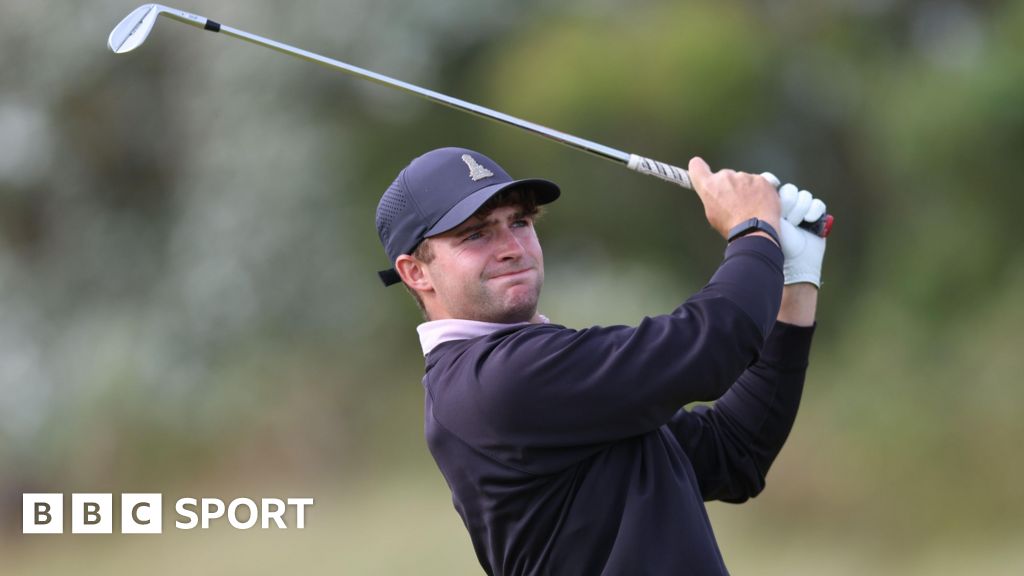Premier League fans have witnessed some of the game’s true greats since the division’s inception in the early nineties, but even as we approach nearly three decades of the rebranded top flight, one man stands above the rest when it comes to genuine goalscorers.
Alan Shearer set unprecedented standards as the league’s finest forward throughout much of his career, becoming the first player to breach 200 goals in the competition and setting a Premier League record of 260 goals at the time of his retirement – a landmark many feel may never be bettered.
The latest instalment of our Golazo Merchants series takes a look at a centre-forward who seemingly had it all, a player feared by even the division’s best defences and one who remains the benchmark for all who have followed.
We’ve decided to sift through a catalogue of strikes boasting both quality and quantity, this is the story of the greatest goalscorer in the history of both Newcastle and the Premier League.
Shearer’s origins began in the Gosforth suburb of Newcastle, where the football-mad youngster’s formative footballing years came at the notorious North East amateur side, Wallsend Boy Club, a community club which also counts the likes of Steve Bruce, Peter Beardsley and Michael Carrick amongst the famous alumni to have come through their ranks to enjoy huge success in the professional game.
It was during those years at Wallsend that a young Shearer began to earn attention from several sides, most notably Southampton who invited the forward to train with their youth side throughout the summer months.
Despite interest from the likes of Newcastle and Manchester City, Shearer signed youth terms with the Saints and spent two years in their academy ranks before making the most remarkable of impacts in the first-team.
Shearer was handed his debut as a substitute during a pre-Premier League First Division clash against Chelsea, before bursting onto the scene on his full debut two weeks later, the 17-year-old scoring a stunning hat-trick in a 4-2 victory against Arsenal to eclipse Jimmy Greaves’ landmark as the youngest top-flight treble scorer.
Despite that immediate impact, the developing star scored just seven league goals over the next two seasons, though a fine record in cup competition during the 1990/91 campaign saw him finish with 14 goals to be named as Southampton’s Player of the Year.
His early years saw Shearer demonstrate the fearlessness that would define his game throughout much of his career, whether that would be flinging himself at crosses or ruffling the feathers of established defenders much his senior, his uncompromising and physical approach – mixed with a penchant for scoring goals – marking the youngster out as a special talent.
Shearer’s status continued to rise and he enjoyed a true breakthrough year in the final pre-Premier League season, scoring 21 goals in all competitions for Southampton and enjoying a prolific run of form with the England U21 side.
He scored an incredible seven goals as the Young Lions won the 1991 Toulon Tournament, including a winning goal in the final against France, breaking the U21 record with 13 goals in just 11 appearances, a landmark that stood for almost three decades.
His stellar season at Southampton and burgeoning reputation on the international stage prompted big-spending Blackburn to make their move for the player as an exciting dawn was ushered in with the formation of the Premier League, Rovers backed strongly by millionaire owner Jack Walker after earning promotion to the rebranded division via the second division play-offs.
Manchester United – who had finished as runners-up in the First Division the previous season and were beginning to impress under Sir Alex Ferguson – also registered an interest in the player, though a half-hearted approach from Old Trafford, coupled with an English record bid from Blackburn, saw Shearer head to Ewood Park.
It would be the start of something special.
Blackburn’s big-money signing began brilliantly as the division’s new-boys started the season with a seven-game unbeaten run, Shearer scoring six times during that period including a debut brace against Crystal Palace.
His first strike was right out of the top drawer, a long ball forward headed into his path, before the summer signing cushioned the ball on his chest and unleashed a dipping, outside-of-the-boot volley over the goalkeeper to open his account.
The goals continued to flow as newly-promoted Blackburn upset the status quo over the opening months of the campaign, including a 7-1 thrashing of a Norwich side who were sitting top of the Premier League in October before a spectacular defeat at Ewood Park.
Shearer scored twice in a devastating rout of the league leaders, amongst his brace this delightful effort which is perhaps in contrast to the type of goal regularly associated with the Geordie goal-machine.
Shearer was so often synonymous with being a powerhouse of a player, a forward who unleashed his shots with maximum velocity and a regular scorer of goals that seemed destined to burst the back of the net.
His younger years, however, saw Shearer play with zip and he boasted deceptive pace to trouble top-flight defenders, his repertoire of finishing also including subtle strikes in addition to his signature screamers.
This chipped effort against Norwich encapsulated a player with many different avenues to goal, a cheeky and composed finish after spotting the goalkeeper dangerously off his goal-line.
That season was devastatingly ended in December for the forward who had fired Blackburn into unlikely title contention, his run of 16 goals in just 21 league appearances ended after sustaining an anterior cruciate knee ligament injury against Leeds, an injury that would leave him sidelined for several months and curtail his campaign.
Any fears that the forward may not return the same player were swiftly ended as he made his mark on the following campaign, scoring 31 league goals to be named as the FWA Footballer of the Year as Blackburn improved on a fourth-placed finish the previous year to finish as runners-up to champions Manchester United.
Kenny Dalglish’s expensively-assembled side were gaining momentum and the 1994/95 campaign proved a monumental one for both the club and their prolific number nine, Shearer winning a first ever Premier League Golden Boot after scoring 34 goals – equalling the divisional record set by Newcastle’s Andy Cole the previous season and a landmark that is yet to be bettered.
Shearer’s haul included hat-tricks against QPR, West Ham and Ipswich, his catalogue of goals ranging from blockbuster bangers from distance, to towering headers as he battered and bruised central defenders across the division.
Working in brilliant tandem with strike partner Chris Sutton, the duo dovetailed to fire Blackburn to a first league title in 81 years, pipping Manchester United by just a single point as their formidable forwards combined for 49 goals.
The goals continued to flow the following season despite a drop off in performance from Blackburn, Shearer finishing as the division’s leading scorer for a second successive season after scoring 30+ league goals for a third consecutive campaign.
To put that into context, no other player in the entire history of the Premier League has ever scored 30+ goals on more than one occasion.
Amongst his highlights included this thumping effort against Wimbledon, a goal that demonstrates the best of a player who played the best football of his record-breaking career at Blackburn.
A cross into the penalty area is controlled perfectly by the talismanic number nine, the close attentions of his marker irrelevant as he shrugs off a challenge and cushions a delightful touch into space.
Without hesitation his pulls the trigger, rifling an unstoppable effort which leaves the goalkeeper motionless, a strike of pure power and precision that flew into the top corner.
Blackburn’s decline and slump to a seventh-placed finish – alongside Shearer’s status as arguably Europe’s finest centre-forward – saw his spell with the club come to an end in 1996, with Manchester United and Newcastle battling for the services of England’s finest footballer.
Shearer had starred during the summer’s European Championships on home soil to win the tournament’s Golden Boot, and faced the difficult decision between signing for the Premier League’s dominant force or a Newcastle side he had supported since childhood.
After talks with both managers, he ultimately opted for heart over head, heading to Newcastle where he was greeted by thousands upon thousands of screaming Geordies, each eager to catch a glimpse of the hometown hero upon his return to the North East.
It had taken a world-record fee of £15m to bring him to St James’ Park.
Newcastle had spectacularly blown a 12-point lead to finish as runners-up the previous season and signing of Shearer was viewed as the final piece in the title jigsaw, the marquee man marking his home debut with a fabulous free-kick against Wimbledon.
His first season in the black and white of the Magpies saw Shearer repeat his goalscoring exploits from Blackburn, winning a third consecutive Golden Boot – a feat only since matched by Thierry Henry – and winning a second PFA Player of the Year award.
It was not enough, however, to deliver a league title as Newcastle finished as runners-up once more, sparking the end of the entertaining Kevin Keegan era and it would be the closest Shearer ever came to delivering the Premier League to his boyhood side.
Shearer suffered serious ankle ligament damage in pre-season ahead of the 1997/98 campaign and in truth, was never quite the same player, mixed periods followed under the guidance of Kenny Dalglish and later Ruud Gullit, losing back-to-back FA Cup finals to Arsenal and Manchester United respectively.
The goals flowed but not quite with the same regularity they had done in previous seasons, Shearer scoring 21 goals in all competitions during the 1998/99 season after returning to full fitness, including booking Newcastle’s place in that aforementioned FA Cup final with this effort against Tottenham.
A rolling ball to the edge of the area to a lurking Shearer? There was only going to be one outcome.
Crash. Bang. Wallop.
Super Shearer ⚫️⚪️#OnThisDay in 1996, @alanshearer signed for @NUFC!#EmiratesFACup pic.twitter.com/M0gvhRohzI
— Emirates FA Cup (@EmiratesFACup) July 30, 2021
Gone was the early explosiveness which had seen Shearer terrorise Premier League defences, though he remained Newcastle’s most potent weapon and carried an aura few in the division have possessed, his robust style, physical presence and killer instinct remaining firmly intact.
This effort against Aston Villa stands amongst his finest exhibits of flawless finishing, Shearer – surrounded by youthful energy as Sir Bobby Robson ushered in a new era of positivity at St James Park – unleashing a volley of pinpoint precision.
The likes of Kieron Dyer, Craig Bellamy and Laurent Robert buzzed around the Newcastle number nine, their task to find space and provide deliveries for the Premier League’s most notorious goal-merchant.
This deep cross was finished in stunning style past the helpless Peter Schmeichel, a man regarded by many as the greatest goalkeeper of all-time possessing a resigned look upon his face as a superb guided volley nestled into the corner of the net.
In a career jam-packed with brilliant goals, this precise Alan Shearer volley against Aston Villa might be one of our favourites. Scored #OnThisDay in 2001. pic.twitter.com/2EZJmmtZfu
— MUNDIAL (@MundialMag) November 3, 2020
Sir Alex Ferguson once claimed that when Shearer hit a football it was as if he meant to ‘kill it’, such was the shuddering power he often unleashed when taking aim.
Shearer was far from a refined player at times, but he was mightily effective, his penchant for thunderbastards evident on Ferguson’s own patch during a clash between Manchester United and Newcastle in 2002.
Shearer – with staggered stance and steely stare – is presented with a rolling ball at a free-kick situation, the outcome a rocket of a strike with just the right amount of cut across to fly into the top corner – Fabien Barthez’s dive as redundant as it was dramatic.
Just one week later came a goal for which Shearer will forever be associated, a venomous volley that sits as arguably as the finest of his record-breaking 260 goal Premier League collection.
Shearer had played alongside some fine target-men throughout his time with the likes of Les Ferdinand and Sutton amongst his preferred partners, his natural goalscoring instinct often leading to him anticipating where the ball might drop.
The rather less heralded Shola Ameobi was the partner in question for this golden goal, though a piece of Tyneside teamwork delivered a symbolic Shearer goal, Ameobi’s cushioned header dropping all too invitingly out of the night sky.
What followed was an instinctive volley with the power of a tropical typhoon, the sweetest of strikes and a moment that happened in a flash whilst seemingly contriving to make time stand still – the thud of the connection, the gasp of anticipation, the roar of an ecstatic home crowd.
‘Sheer class – Shearer class!’
An absolute 🚀🚀🚀 from @alanshearer for @NUFC back in 2002 #PLMoments pic.twitter.com/wxc51GbkrP
— Premier League (@premierleague) July 28, 2017
Many view that late equaliser against Everton as the defining goal of Shearer’s career and it is a perfect microcosm of the best centre-forward of his generation.
Shearer was breathtakingly brilliant at Blackburn as 112 goals in 138 league appearances will testify, and whilst not quite the tour-de-force he once was at Newcastle, he became the embodiment of his boyhood side and the greatest goalscorer Tyneside has ever seen.
Shearer’s emotionally driven move to Newcastle meant he never won the winner’s medals his talent deserved, but he has long insisted his heroic status in a football-obsessed one-club city means more than any team success.
Where else would a Gosforth-born Golazo Merchant receive quite the same adulation, as shirtless supporters bizarrely brave the winter months for a glimpse of their on-field embodiment wheeling away once more, one arm aloft in signature celebration.
A Shearer special 😍#GoalOfTheDay pic.twitter.com/h2w7RFAdW9
— Premier League (@premierleague) June 23, 2021
Alan Shearer sits rightfully amongst the pantheon of Premier League icons and remains the greatest goalscorer the division has ever seen.
In truth, there are few who come close.
Read – Golazo Merchants: Newcastle’s frustrating genius Laurent Robert
Read Also – Golazo Merchants: Thunder thighed hitman, Jimmy Floyd Hasselbaink







